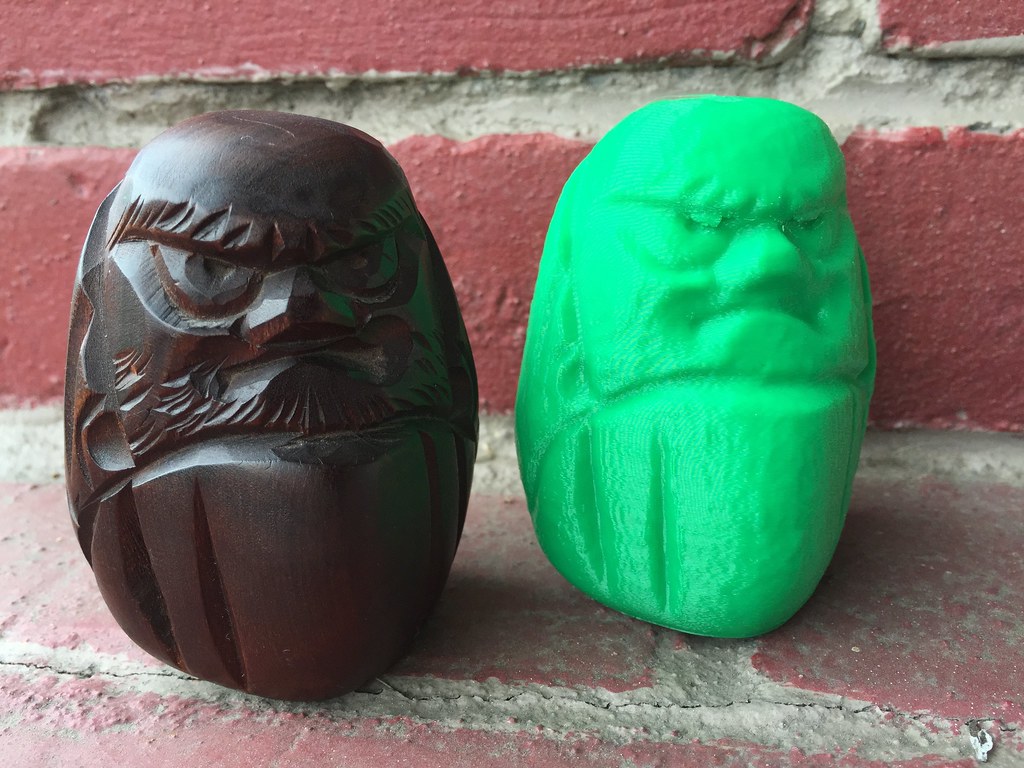My favorite chair has a similar problem with its plastic feet. The problem is that the ends of the metal legs are so sharp that they keep slicing through whatever I put on them. I had high hopes for “tennis balls” (think of the walker from Up), but they don’t hold up.
Your printer needs a little tuning. Things are looking rough.
File away the edges, perhaps? Or, if the problem is not the edges but the small thickness of the tube that under load acts as a cookie cutter, plug it with e.g. a bolt, or a nut (the kind with crowned edge that’s a bit wider) and perhaps tack-weld or screw it in place, and THEN add the plastic feet?
Thought… What about a filament material filled with e.g. glass microspheres? Could add quite some resistance to abrasion…
Yeah, I need to level the table.
I’m in process of getting a printer with autoleveling. May be a good idea, as doing it manually is a bitch.
For your one, maybe a semiautomatic method would be advisable. I saw somewhere (Hackaday?) a way to mount the table on spring-loaded posts with some kind of locks. “Zero-position” of the table is a bit higher. So move the head to a corner, push down to zero position (a little below, as much as needed), halt; manually lock the post of the corner with a friction brake or with a stopping screw. Repeat for the other corners.
There are also approaches that do not move the bed but calibrate the machine’s positioning, telling it where the ideal zero plane is in real coordinates, and the rest is math.
Edit: Also, why not OpenSCAD? These little things look like two cube() primitives added and third cube() one subtracted. Can also be friendly to parametric generation, so if something needs to be changed, just change that one variable value assignment and regenerate the rest.
Its good to see a 3D printer being used for something useful. I have a K8200 printer from Vellaman and have found that 90% of my printing projects have been things to improve the printer. The rest seem to be things to show people what it can do. Thats when everything goes well, I have a bin that looks something like an aliens graveyard
I don’t have a printer, but luckily there was a helpful tinker in the car forums… About three years ago the latch on my hatchback quit working (could open it with a key, but not with the key-fob or cabin-button). The problem was a little plastic part in the gear box that actuated the lock. Folks who went with the dealer fix were paying ~$300 for the replacement gear box and labor. The tinker in the forums came up with a slightly more robust version of the part and printed off a batch that he sold (more or less) at cost. A few bucks and 20 minutes of wrangling in a tight space and I had a nice functional latch.


I am looking forward to printing in at least this or better resolution from metal.
Spare parts FTW.
I’m just working on 3D scanning and printing Bodhidharma dolls.

Mark,
Instead of printing feet for old chairs, how about printing hands for young children? http://enablingthefuture.org duh!
Perhaps a Yoda head version of a claw-foot

Start small. ![]()
The advanced stuff will come later.
Nice work Mark! I’ve made some real world, not just for fun, 3d printed parts as well, it is really thrilling. First was a speedometer shell printed in black plastic and mounting brackets printed in stainless steel, for my Guzzi:
Then, also for the Guzzi, some air intakes:
Lastly some stainless steel rearset footcontrol brackets for my Triumph:
These were all printed by shapeways. I designed everything in C4D, prepped the files for printing in the free version of Netfabb. Haven’t bought my own yet, haven’t been impressed with what I’ve seen as far as surface quality and dimensional accuracy… I will soon though, for sure. Some of them are looking pretty good now. Happy mutants we are, indeed 
That’s a thing about 3D printers. It’s easier to make things that looks like things, than it is to make things you can actually use.
I’ve made many useful items with mine, the latest being the coil form for a motor, a very big version of the one in a hard disk, to move the secondary mirror in a radio telescope. I’ve also made propellers for an underwater robot, and about ten iterations of the case for my Etch-a-Sketch wristwatch (which is still in development).
Isn’t that a thing about every manufacturing method known? ![]()
Which kind do you have, may I ask?
I’m looking at a Kossel XL, is it a good choice or should I run away screaming?
I’ve been spending a lot of time with the Printrbot Simple Metal, and its leveling system is amaaaaazing once you get it dialed in. The trick is getting the Z-offset on the probe just right, but since everything is steel and aluminum and locked into place with double washers, it pretty much never moves.
Because Tinkercad is awesome. I have used Blender, 123D design, Autodesk Fusion, and Inventor, and I still come back to Tinkercad for the vast majority of my first drafts.
As a fun aside, one of the best success stories I have seen for OpenSCAD was when I got a guy with total vision loss to start drafting with it since it was the only program that worked with his screen reader.
It’s so great, living in the future.
